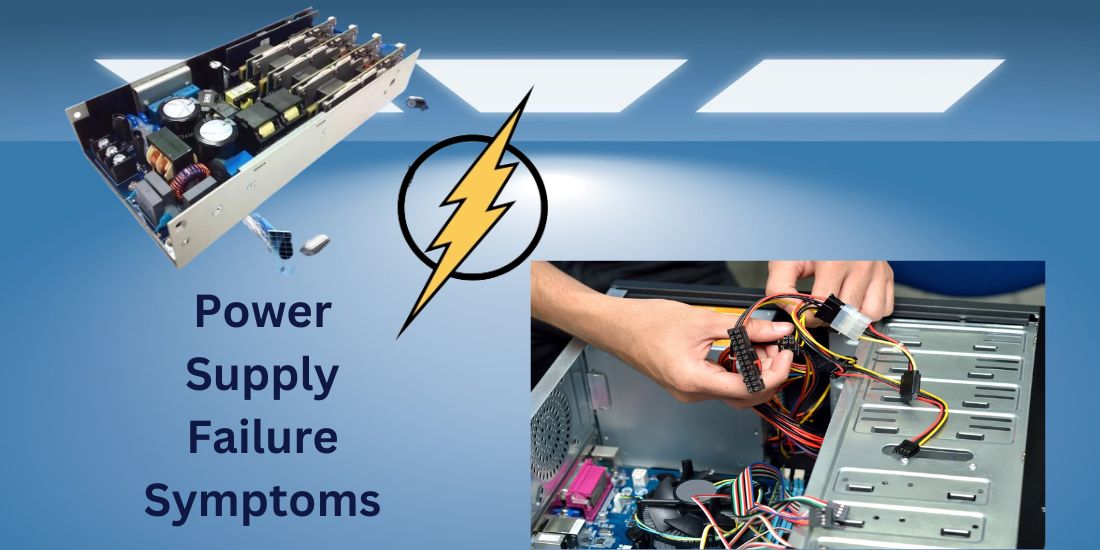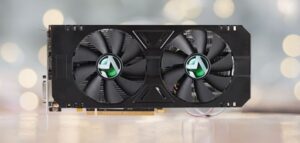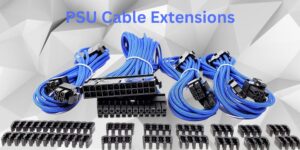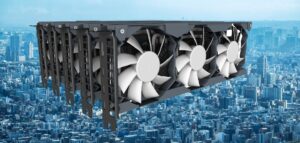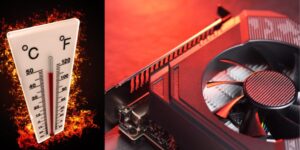Identifying Power Supply Issues: Warning Signs and Solutions
In the interconnected realm of technology, the backbone of our electronic devices lies in the unassuming power supply unit. As the silent workhorse converts electrical energy into a usable form, its significance cannot be overstated. However, the spectre of power supply failure symptoms looms, threatening to disrupt our daily lives and compromise the integrity of our gadgets. In this article, we embark on a journey to demystify the intricate workings of power supply units, exploring their basics, common causes of failure, and, most importantly, practical steps to prevent such failures. Join us as we shed light on the often-overlooked yet critical component of our electronic ecosystem, empowering you to recognize, understand, and safeguard against power supply failure.
Understanding Power Supply Basics:
Power supply is the heartbeat of any electronic device, providing the necessary energy to keep it running. Whether it’s your computer, television, or any other gadget, the power supply unit is the unsung hero behind the scenes.
How Power Supply Units Work:
- At its core, a power supply unit (PSU) converts electrical power from an outlet into a form usable by the device. It ensures a steady and regulated flow of electricity, preventing damage to sensitive components.
Direct Current (DC) vs Alternating Current (AC)
- Most electronic devices require DC, but electricity from the grid is AC. The power supply’s job is to convert AC to DC, creating a seamless transition of power that your devices can work with.
Voltage, Current, and Wattage:
- Understanding these three terms is crucial in power supply basics. Voltage is the force of electricity, current is the flow, and wattage is the overall power. A power supply must provide the right combination for a device to function optimally.
Components of a Power Supply Unit:
- A typical power supply unit comprises several key components. Capacitors store energy, transformers modify voltage, and rectifiers convert AC to DC. Learning about these elements helps demystify the inner workings of your device’s power source.
Regulation and Stability:
- Power supply units must maintain stable output under varying conditions. Regulation ensures that voltage and current remain within specified limits, preventing damage to connected devices.
Power Efficiency:
- Efficiency is a critical aspect of power supplies. Higher efficiency means less energy wasted as heat. Understanding efficiency ratings (often expressed as a percentage) helps consumers choose power supplies that are both reliable and energy-efficient.
Why Power Supply Basics Matter:
Understanding power supply basics is more than just a technical exercise. It empowers consumers to make informed decisions when purchasing electronic devices or upgrading components. A solid grasp of these fundamentals ensures that your devices receive the power they need to perform optimally, while also safeguarding them from potential damage caused by electrical fluctuations. In the next sections, we’ll delve deeper into common causes of power supply failure and how to recognize symptoms early on. Stay tuned for valuable insights that can save your devices from unexpected outages and potential damage.
Common Causes of Power Supply Failure:
Understanding the common causes of power supply failure is vital in safeguarding your electronic devices. Let’s explore the culprits that can lead to the untimely demise of your power supply unit.
1. Electrical Surges:
Electrical surges are sudden, brief spikes in voltage that can wreak havoc on your power supply. They can be caused by lightning, power outages, or even faulty wiring. Investing in a quality surge protector is a wise move to shield your devices from these destructive surges.
2. Overheating:
Overheating is a silent killer of power supply units. Continuous operation at high temperatures can lead to component degradation and eventual failure. Ensure proper ventilation and cooling in your device to prevent overheating-related issues.
3. Aging Components:
As power supply units age, their components naturally wear out. Capacitors, in particular, are susceptible to deterioration over time. Regular maintenance and periodic checks can help identify aging components before they lead to a complete failure.
4. Voltage Instabilities:
Fluctuations in voltage, whether too high or too low, can strain a power supply unit. Voltage instability can be caused by issues in the electrical grid, poor-quality power sources, or faulty wiring. Employing a voltage regulator can help stabilize power input.
5. Power Surges During Restart:
Power surges often occur when a device is powered on or restarted. The sudden rush of electricity can stress the power supply. Implementing a controlled restart sequence and avoiding frequent power cycling can mitigate the risk of power surges during restart.
6. Environmental Factors:
The environment in which electronic devices operate matters. Dust and debris can accumulate over time, leading to overheating. Keeping the surroundings clean and ensuring proper airflow can prevent environmental factors from contributing to power supply failure.
7. Manufacturing Defects:
While rare, manufacturing defects can also be a cause of power supply failure. These defects may not manifest immediately but can surface over time. Purchasing power supplies from reputable manufacturers and keeping an eye on product recalls can minimize this risk.
8. Power Supply Overloading:
Every power supply has its limits. Overloading occurs when the connected devices draw more power than the power supply can provide. Knowing the power requirements of your devices and not exceeding the rated capacity of the power supply can prevent overloading.
Preventing Power Supply Failure:
Proactive measures are the key to ensuring a prolonged and trouble-free life for your power supply unit. Let’s explore practical steps you can take to prevent power supply failure and keep your electronic devices running smoothly.
1. Invest in Quality Surge Protectors:
Shielding your devices from electrical surges is paramount. Invest in a high-quality surge protector that provides robust protection against sudden voltage spikes. This simple addition can significantly extend the lifespan of your power supply unit.
2. Implement Regular Maintenance:
Regular maintenance is akin to giving your power supply unit a health check. Keep the surroundings clean to prevent dust accumulation, as this can contribute to overheating. Periodically inspect and clean your power supply unit to ensure optimal performance.
3. Ensure Proper Ventilation:
Heat is a major adversary of power supplies. Ensure that your electronic devices, especially those with internal power supplies like computers, have proper ventilation. Adequate airflow prevents overheating and promotes the longevity of your power supply.
4. Use Voltage Regulators:
Voltage fluctuations can strain your power supply unit. Installing voltage regulators helps stabilize the incoming power, providing a consistent and safe environment for your devices. This is particularly beneficial in areas with unreliable power grids.
5. Controlled System Restarts:
Power surges often occur during system restarts. Implement controlled restart sequences to minimize the stress on your power supply unit. Avoid frequent power cycling, as this can contribute to wear and tear over time.
6. Monitor Power Consumption:
Understanding the power requirements of your devices is crucial. Avoid overloading your power supply unit by ensuring that the total power drawn by connected devices does not exceed the rated capacity of the power supply. This simple practice can prevent undue strain on the unit.
7. Invest in Quality Components:
When upgrading or replacing your power supply unit, invest in quality components from reputable manufacturers. A reliable unit with durable components is more likely to withstand the test of time and provide a stable power source for your devices.
8. Uninterruptible Power Supply (UPS) Systems:
Consider adding an Uninterruptible Power Supply (UPS) to your setup. UPS systems provide a temporary power source during outages, giving you time to save work and shut down devices properly. This extra layer of protection is invaluable in preventing abrupt power supply failure.
Conclusion
In conclusion, safeguarding your electronic devices from power supply failure is not just about troubleshooting; it’s a proactive commitment to device longevity. By grasping the fundamentals, recognizing common failure causes, and implementing preventive measures, you fortify your devices against the unseen threats of electrical surges, overheating, and ageing components. With a vigilant eye and the right precautions, you can ensure a seamless and uninterrupted experience with your technology. Embrace the power of knowledge to keep the lights on and your devices thriving. Now, armed with insights, you’re better equipped to navigate the electrifying landscape of power supply management.
Frequently Asked Questions
Q: How often should I replace my power supply unit?
A: It depends on usage, but a good rule of thumb is every five years or sooner if you notice any symptoms of failure.
Q: Can a surge protector completely prevent power supply failure?
A: While surge protectors are highly effective, they can’t guarantee absolute prevention. Regular maintenance is also crucial.
Q: Are power supply failure symptoms the same for all devices?
A: While there are common signs, symptoms can vary slightly between different types of electronic devices.
Q: What are the dangers of ignoring power supply failure symptoms?
A: Ignoring symptoms can lead to permanent damage to your devices and, in extreme cases, pose a fire hazard.
Q: Is it possible to repair a failing power supply unit, or is replacement the only option?
A: In some cases, repairs are possible, but replacement is often the safer and more reliable choice.
Last Updated on 28 January 2025 by Ansa Imran

Ansa Imran, a writer, excels in creating insightful content about technology and gaming. Her articles, known for their clarity and depth, help demystify complex tech topics for a broad audience. Ansa’s work showcases her passion for the latest tech trends and her ability to engage readers with informative, well-researched pieces.

